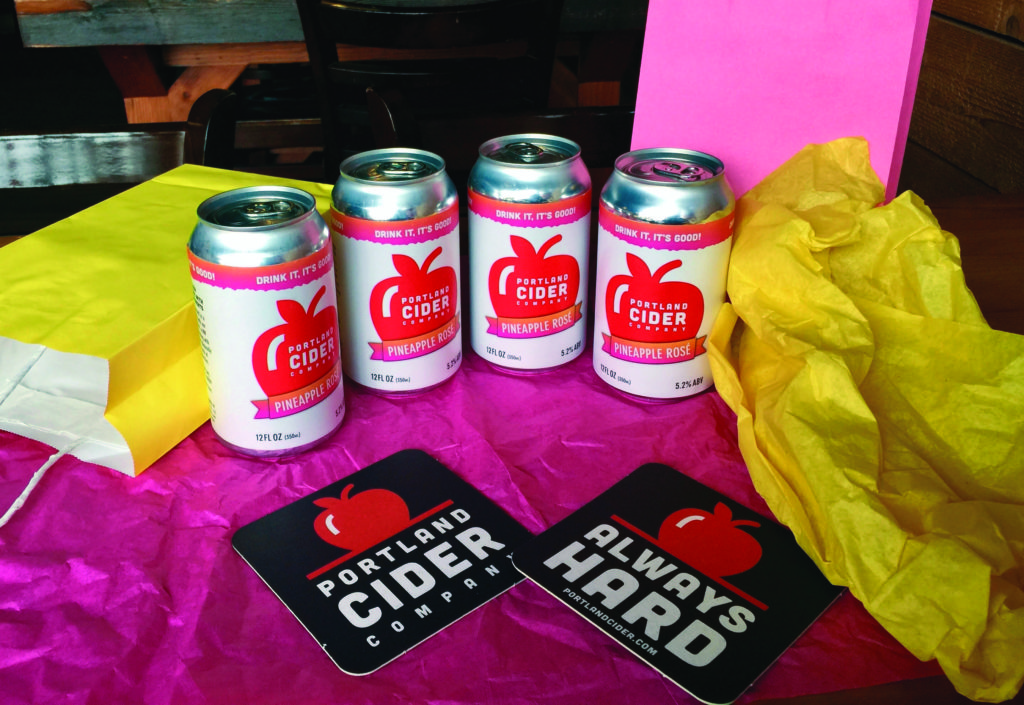
By: Becky Garrison
As we enter into a new decade, an increasing number of breweries, cideries and distilleries are moving from recording their finances, employee logs and other data from offline pen and pencil accounting methods to online software systems. Here’s a sampling of some of the latest techno-logical developments that are specifically geared towards helping these outfits better manage their businesses.
ShiftNote
ShiftNote is an online manager logbook and employee scheduling software. The program, re-leased in 2002, gives owners, managers and employees the ability to communicate in one place. Employees can change their shifts and request time off in a few easy clicks. Then managers can approve or deny these changes and requests.
The scheduling feature allows users to create and publish schedules and shift notes that can be viewed on any mobile device. Additionally, the manager log book can track key daily sales, re-pair and maintenance schedules, upcoming events and labor stats. As this logbook is entirely cus-tomizable, business owners can add custom categories and stats contingent on their particular needs.
Help articles, tutorials and free screen share trainings are available for those who need assistance in setting up and using ShiftNote. A major software update slated for 2020 will offer new and enhanced features.
Whiskey Systems Online
Whiskey Systems Online is a complete production tracking and TTB reporting system tailored to the unique needs of American craft distillers. Launched in 2014, this software offers complete distillery operations tracking, from raw materials to cases shipped out. Features include invento-ry and barrel management, cost of goods sold, manufacturing cost accounting, forecasting and planning, batch tracing, auto-generated TTB monthly reporting and federal excise tax returns, QuickBooks integration, employee task management, TTB audit preparation, success metrics dashboards and much more.
Whiskey Systems’ propriety hardware interface allows distillers to track the temperature and humidity of their warehouse during a barrel’s entire aging lifecycle. By tying the aging history to their Whiskey Systems barrel inventory, the software can both optimize aging conditions and eliminate manual data entry from a third-party monitoring system.
In 2020, the company plans on launching a brand new interface to improve the user experience and navigation. The update will include more production planning and forecasting tools and more success metrics and dashboards. As Whiskey Systems is a “subscription as a service,” there are no required downloads, and eve-rything is available via a browser. Users just activate their subscription online for immediate ac-cess. Whiskey Systems has extensive online resources such as training videos and help pages, as well as one-on-one support and set up for no additional charge.
Daruma Tech
Since 2015, Daruma Tech has been developing mobile loyalty applications for beer guilds. For the more significant guilds and associations, it has a customizable solution that can be tailored to suit their marketing needs. For smaller guilds, the “lite” version can help them get started with their digital loyalty program.
This loyalty program software rewards consumers for visiting participating locations. App users can keep track of the breweries they’ve been and the places they want to visit next. Users collect stamps at each brewery and claim prizes based on the number of stamps they’ve collected.
Brewers who participate can access a portal where they manage their content, including location-specific information, beers, events and deals. The app also provides a marketing channel where brewers can communicate directly with their target audience, as well as a social component where users can share their thoughts on different breweries and beers.
The mobile app is powered by a cloud-based mobile content management system. Participating locations can update the content in real-time through their MCM. There is nothing to maintain, download and install, as it’s also a subscription-based service. A knowledge library where users can access help documents is available online.
Current guild users of the app are New York State Brewers Association, Ohio Craft Brewers As-sociation, Brewers of Pennsylvania, Massachusetts Brewers Guild, Rhode Island Brewers Guild, Connecticut Brewers Guild and the Washington Beer Commission.
In 2020, Daruma Tech will begin offering these services for other craft beverages and related craft foods.
KegID
KegID is a cloud-based asset scanning and tracking application that’s been available to brewers since 2001. The software allows brewers to track how many kegs they currently have in use by providing visibility and insight. This application can create accountability by pinpointing the lo-cation of a barrel, its contents and dwell time.
Scanning can be done with a variety of equipment, from Android or iOS mobile devices to fixed in-line scanners. In addition to scanning kegs at the brewery, they can be scanned in the field and marked for special handling if any part of it is found to be damaged or malfunctioning. It can al-so identify kegs that are due for routine maintenance.
Also, KegID is automatically included on any kegs leased through its lease-to-own solution, KegFleet, at no extra charge. Each brand new European keg comes laser-etched with the scan codes and the ID numbers pre-loaded into the application. They are ready to scan and track upon delivery.
In addition to online resources, a team of people located in KegID’s Houston-based office are available to provide personal assistance to new users during business hours.
The app can also be used to manage other reusable assets like pallets and tap handles.
Kegshoe
For the past four years, cideries, breweries, distilleries and other craft beverage producers worldwide have been using Kegshoe tracking software. Using either an iOS or Android app alongside Kegshoe’s barcode stickers, producers can track their keg fleets throughout the entire production, storage and distribution cycle.
The application then offers insights into the status, location and development of a keg fleet, ensuring that turnover cycles are kept in check and kegs are not being lost. Having the reporting and logging tools available to show the contents, location and details of each barrel allows customers to manage their fleet inventory better.
To make setup and operation as convenient and affordable as possible, the company eliminated the need for additional hardware. Producers can download the Kegshoe app on their devices and start scanning. Other features include rental customer logging and tracking, and production batch assignment and monitoring
Kegshoe is currently in the process of releasing a craft beverage-focused customer relationship management software. The CRM will help to provide an industry-tailored system for sales reps and managers to log and manage their customers, sales cycles and productivity. With both desk-top and mobile functionality, it is meant to make the sales process for craft beverage producers as efficient and affordable as possible.
All new customers receive a series of onboarding materials, including detailed product tours that walk them through the app and desktop software, as well as a support article library. Additional-ly, Kegshoe offers around-the-clock support, ensuring all issues and questions are addressed promptly and don’t interrupt brewing operations.
Small-Batch Maps
Released in 2019, Small-Batch Maps is designed to help breweries and distilleries better manage their distribution and sales. The company wants to lessen the challenges of market forecasting by helping producers determine if they should market one product or concentrate on all of their of-ferings.
The software allows potential customers to search for products on a website, and for beverage companies to gain marketing insights, estimate product needs and discover new distri-bution regions. Producers can then use this data to market the products most in-demand, or those with less traction.
Breweries and distilleries can easily add Small-Batch Maps to their websites and other online properties. Once they’ve added the feature, they can head over to their website, log in, and add new locations as their distribution networks grow.










